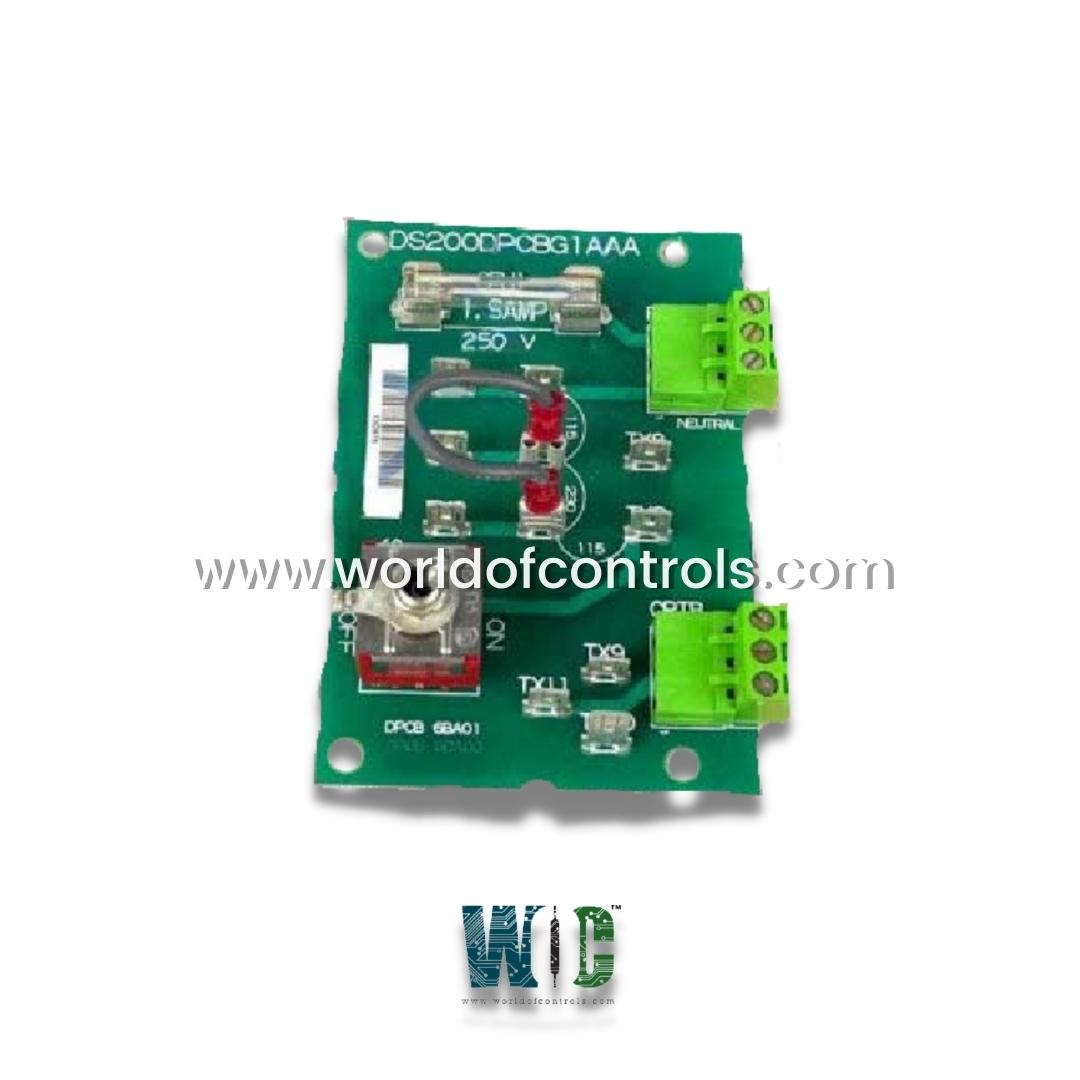
World Of Controls understands the criticality of your requirement and works towards reducing the lead time as much as possible.
DS200DPCBG1A - IOS Power Connect Board is available in stock which ships the same day.
DS200DPCBG1A - IOS Power Connect Board comes in UNUSED as well as REBUILT condition.
To avail our best deals for DS200DPCBG1A - IOS Power Connect Board, contact us and we will get back to you within 24 hours.
SPECIFICATIONS:
Part No: DS200DPCBG1A
Manufacturer: General Electric
Function: Power Connect Board
Series: EX2000
Operating temperature: -25 to 65 ºC
Power Supply Voltage: 125 V dc
Board Size: 33.0 cm high x 17.8 cm
Connections: BNC Connectors
Weight: 0.45 kgs
Availability: In Stock
Country of Origin: USA
Manual: GEH-6122
FUNCTIONAL DESCRIPTION:
DS200DPCBG1A is an IOS Power Connect Board manufactured and designed by General Electric as part of the EX2000 Series used in GE Excitation Control systems. Local area network lines for DLAN+, DLAN, and Genius as well as connections for AC line power are provided by the DS200DPCB board and 1TB. On the DPCB board, a power switch and connector ports for the control power transformer are also available.
LOCAL DIAGNOSTIC MONITOR:
The diagnostic keys and display provide access to the menu-driven Local Diagnostic Monitor. Four keys can be used to implement each monitor function. This enables the identical procedures to be carried out on both the 16-key diagnostic keypad in its entirety and the four-key variant.
The static and dynamic components of the main menu may always be distinguished by the 10s identifying mnemonic appearing as the first five characters of the menu option. Depending on the mode or status of the 10s, dynamic selections are added to or removed from the main menu. The primary menu always includes static options.
LINE POWER AND FUSES:
WOC has the largest stock of GE Excitation Control System Replacement Parts. We can also repair your faulty boards and supply unused and rebuilt boards backed up with a warranty. Our team of experts is available round the clock to support your OEM needs. Our team of experts at WOC is happy to assist you with any of your automation requirements. For pricing and availability on any parts and repairs, kindly get in touch with our team by phone or email.
What is the role of a Power Connect Board in turbine control systems?
The Power Connect Board in turbine control systems serves as a critical component for managing power distribution, interfacing with sensors, and controlling various subsystems within the turbine.
What types of turbines can benefit from a Power Connect Board?
A Power Connect Board can be used in various types of turbines, including gas turbines, steam turbines, and wind turbines, to streamline power management and control processes.
What specific functions does the Power Connect Board perform in turbine control systems?
The board facilitates power distribution, manages communication between control modules, interfaces with sensors and actuators, and supports data transmission for real-time monitoring and control.